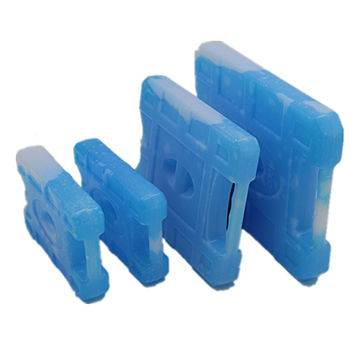Vaccines and pharmaceuticals are specially painful and sensitive products which Ice Gel Packs, or even made and delivered under stringent controls, can be useless or even dangerous to the consumer. Compared to that conclusion, in the 1970s the Food and Medicine Government (FDA) began to develop specific recommendations to try and consider biologic and pharmaceutical items before they could be launched to the public.
Validation techniques started initially to get form and were placed on the pharmaceutical and vaccine agreement process. Eventually, validation techniques and recommendations were developed for the cold string supply system as well, with the goal of giving temperature confidence throughout the production, storage, delivery and supply of medicines. Especially, the Parenteral Medicine Administration’s (PDA) Specialized Report #39 traces validation strategies for the cool chain.
With some exceptions, the temperature standard throughout the manufacturing, storage and shipping of pharmaceuticals and vaccines is between 2 to 8 degrees Celsius. Due to the important nature with this shipment, demanding testing should be executed on the equipment and resources responsible for its powerful delivery to ensure it meets recognized standards. The target temperature should be preserved underneath the undesirable problems that insulated delivery bins may be subjected to. These situations are at first simulated and then tried “in the field.” Results from these checks are recorded in good detail.
With new cool cycle solutions set up, the pharmaceutical source sequence is more secure and trusted than ever before. Data logging and revealing technology has taken a step of progress and is more meticulous. The engineering surrounding insulated shippers is more complex as well. Obviously with this specific development comes an elevated number of credentials for cold cycle gear to meet up and exceed as part of the validation process.
Nevertheless they range slightly according to each unique condition, a few of the basic procedures within a cool chain validation testing method are: All testing gear, from thermal check chambers to shake platforms, is afflicted by a complete validation process. This ensures that equipment is fitted correctly and features as intended. Heat checking tools are calibrated to ensure data is precisely documented.
All elements of the cold string appearance process to be validated are inspected to make sure that they meet specification. That ranges from protected transport bins and refrigerant packages to active heating and cooling systems. In a research setting, the cool chain presentation system is subjected to a simulation of worst event transportation conditions. This includes thermal testing against hot and cold normal temperature profiles and physical hazards such as falls, shake, and compression. Gear and data are cautiously monitored and all findings and results are well-documented.
The cool string packaging program is then monitored in a stay field check to show that efficiency observed in the research environment equals “real world” conditions. If you will find any inconsistencies or issues with the method or gear throughout screening, there will be no validation. Validation will not arise until problems are settled and the hold time potential has shown stability under further demanding testing.
Cold string validation does not end upon effective testing. The tracking, examination and certification of the machine can carry on even with preliminary validation testing is done. The significance of consistent and reliable temperature control in situations where life-saving goods are included can’t be stressed enough. And to those that control cold string circulation procedures, the validation method offers insurance.
You will find many types of particular goods or products that need to be below carefully managed situations or temperature at all times. Food, as an example, needs to be under carefully monitored and managed conditions. Freezing food and make, to be much more specific, have to remain in freezing conditions through the delivery process. Seafood, that will be among the prime perishable food types that is commonly exported, can be very temperature-sensitive. Whether these products can simply be provided in a nearby place or have to be delivered offshore, it is important that the products be kept in a storage or service with carefully managed and uninterrupted heat or climate.
The whole cycle or occasion that entails a specific product being kept under cautiously monitored and controlled conditions concerns the cold chain. A cool chain pertains to an uninterrupted and temperature-controlled source chain consisting of various storage and circulation processes. For a lot of temperature-sensitive products, that string will even begin during their creation stage.
